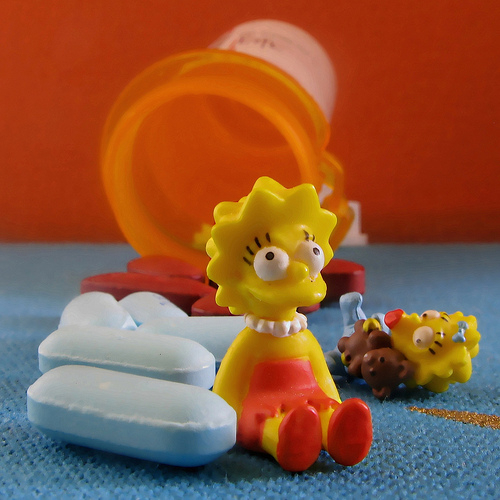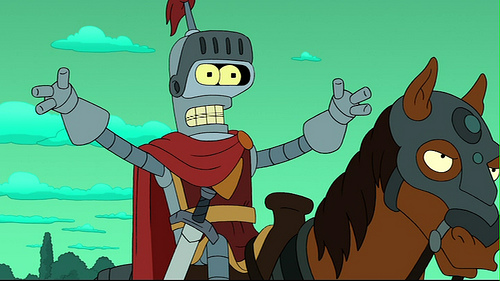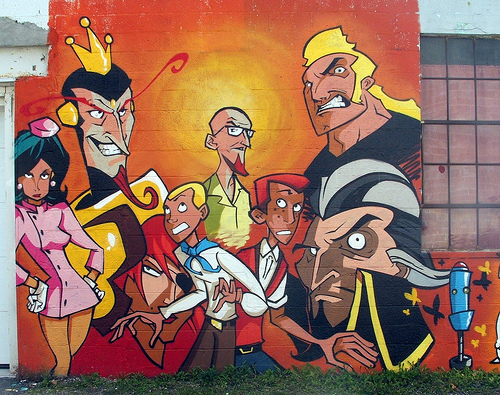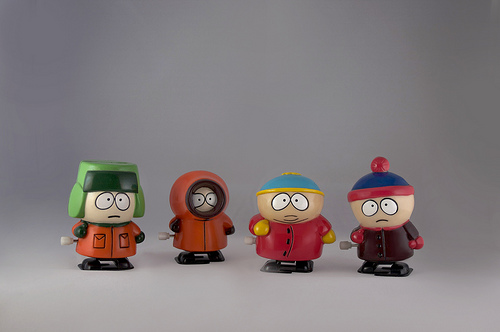Five reasons why animated shows are better than live-action

1. A more controlled color palette
Live-action television shows often have their touchstones. The gold picture frame hung on the inside of the door in Monica and Rachael's apartment. Jerry Seinfeld's kitchen. The crocheted afghan on Roseanne's couch. But none of these iconic items can compare to an animated show's distinctive color palette.
Think of Futurama, with its rust reds, oddball grayish-greens and peculiar yellows. Or King of the Hill, with its light - almost pastel - watercolor backgrounds. Not to mention the way that everyone on The Simpsons is yellow and no one seems to notice. Color sets the mood; nowhere more so than on an animated show.

Image courtesy Flickr/shannonpatrick
2. Animated characters never grow old
Speaking of Friends, watch an early episode and compare it to a later one. Real people in the real world age, and not always well. They get stringy, or bloated, or far too tan. They get facelifts that make their faces look like plastic wrap stretched over a skull. Kids get taller and taller and eventually become actual adults.
But on an animated show, the characters are literally timeless. Sure, sometimes a voice actor might get swapped out for whatever reason. (R.I.P. Phil Hartman.) But it's reassuring to know that even though he's been on the air for 23 years, Bart Simpson still looks and sounds exactly the same.

Image courtesy Flickr/Rakka
3. Wacky characters
Blinky, the three-eyed fish. Brian, the talking dog. Klaus, the German man permanently (except for a few episodes) trapped in the body of a fish. Arianna the talking bear (and I guess also her husband bear Tim, but he's not as funny). These are all characters that would not be possible on a live-action show, short of some terrible trickery. Or using a puppet, like Alf. (Ugh, Alf.)
This freedom can be either set dressing (like Blinky) or an inherent aspect of a character (like Klaus). Imagine trying to make a live-action Leela, alienated from everyone else on the planet due to her single giant eye and purple ponytail. Not to mention a live-action Zoidberg. And we briefly saw a live-action Kenny, but it just wasn't as funny as the animated version.

Image courtesy Flickr/Mocks 108
4. Low-cost travel
Whether you're animating a living room or a Martian landscape, it all costs the same. To a certain extent, the better the animation, the more it costs. And don't get me wrong, animated shows can be extremely expensive to produce.
But essentially with an animated show, your costs are fixed. It's not like a live-action sitcom, where sending the entire cast and crew to London for a wedding is prohibitively expensive, and a stunt reserved just for Sweeps Week and a series of major character developments. You don't even need to deal with City Hall's permit process in order to film in a park - you can just plunk your characters there and get to it.
This means that even a low-budget marvel like the first season of The Venture Bros. can bounce from a massive sprawling science complex (seemingly) somewhere in the fringes of California, to a space station on the moon, to the heart of the Amazon rainforest, to an entire Disney World look-alike theme park. This freedom is sorely missing from most live-action sitcoms which spend 95 percent of their time on the same two sets.
(This makes it all the more mysterious when a show like Family Guy spends most of its time in the same two sets, too. How many Family Guy scenes have taken place in either the living room or the kitchen?)

Image courtesy Flickr/ChrisM70
5. Pushing the envelope
Once upon a time, animated shows were solely the province of children's entertainment. (I don't know about you, but I was raised on Saturday morning cartoons!) But that hasn't been the case for several decades. The Simpsons was ground breaking and transgressive in its day, and shows like Archer, South Park and The Venture Bros. continue to push the boundaries of humor.
For better or worse, people seem more accepting of bizarre perversions, dark humor, and other forms of horribleness when it's animated. If a live actor said half the things that come out of the mouths of characters like Peter Griffin, Pickles Oblong, or Eric Cartman, there would be hell to pay. But somehow since it's coming from a cartoon guy, it doesn't seem as bad.
Main image courtesy Flickr/Darwin Bell

2 comments